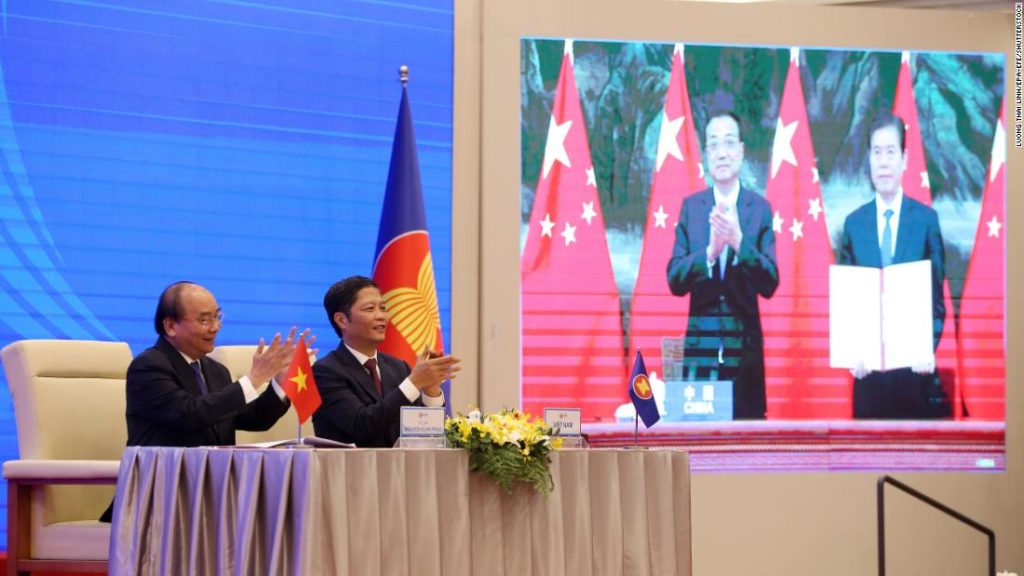The Regional Comprehensive Economic Partnership spans 15 countries and 2.2 billion people, or nearly 30% of the world’s population, according to a joint statement released by the nations on Sunday, when the deal was signed. Their combined GDP totals roughly $26 trillion and they account for nearly 28% of global trade based on 2019 data.
The deal includes several of the region’s heaviest economic hitters aside from China, including Japan and South Korea. New Zealand and Australia are also partners, as are Indonesia, Thailand and Vietnam in Southeast Asia.
The trade agreement was first proposed in 2012 as a way to create one of the world’s largest free-trade zones.
Reinsch said, though, that the agreement could have consequences in the long term, and added that China’s involvement “is a sign of its willingness to play a constructive role, despite its aggressive actions in the South China Sea, Hong Kong, and elsewhere.”
“Both countries see huge benefits from their deeper economic integration with other Asian countries,” said Murray Hiebert, senior associate of the Southeast Asia Program at CSIS. “The RCEP could potentially provide Beijing and Canberra another platform where they could discuss and hammer out their differences.”
Others noted that the deal was further evidence of Asia’s growing power. Economists at HSBC said Sunday that the agreement “signals that Asia keeps pushing ahead with trade liberalization even as other regions have become more skeptical.”
“It may reinforce a trend that’s been already underway for decades: that the global center of economic gravity keeps pushing relentlessly to the East,” they wrote in a research note.
It’s not clear whether the deal will have an impact on the most important global trading relationship of all: That between the United States and China, who have been fighting over trade and related issues for the last few years.
“Whether it means a shift in the regional dynamic in favor of China depends on the US response,” Reinsch said of the new trade deal. He pointed to the importance of the election of Joe Biden, who will succeed President Donald Trump in January.
“If the US continues to ignore or bully the countries there, the influence pendulum will swing toward China,” he added. “If Biden has a credible plan to restore the US presence and influence in the region, then the pendulum could swing back our way.”
— Jake Kwon and Akanksha Sharma contributed to this report.
You may also like
-
Afghanistan: Civilian casualties hit record high amid US withdrawal, UN says
-
How Taiwan is trying to defend against a cyber ‘World War III’
-
Pandemic travel news this week: Quarantine escapes and airplane disguises
-
Why would anyone trust Brexit Britain again?
-
Black fungus: A second crisis is killing survivors of India’s worst Covid wave

